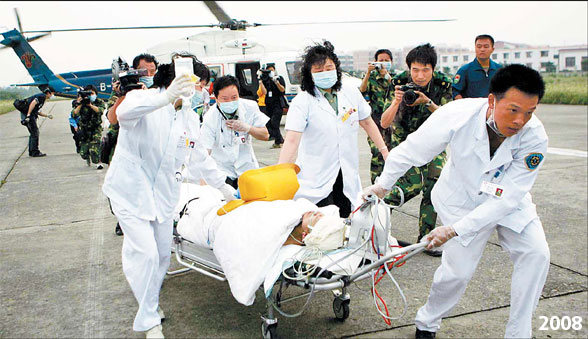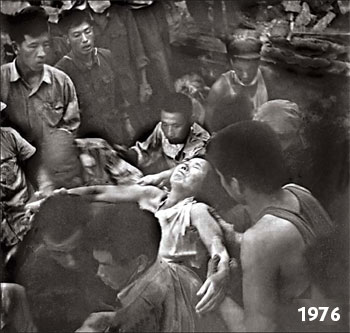Heroes, now & then
By YOU NUO (China Daily)
Updated: 2008-05-26 07:30
Updated: 2008-05-26 07:30

It's been a critical week for all at the Sichuan earthquake disaster zone - a marathon, or rather a series of marathons to save lives.
For the victims still struggling under collapsed buildings, every second in their wait for rescue must have felt longer than a year - pinned in wreckage amid the cold and damp darkness and pain.
It was a world where the most primitive ways were used to sustain life - including drinking one's own urine, and feeding oneself with paper and dirt.
While outside on the hills of debris, there were endless rescue missions, dispatched by the government and formed by volunteers, using all kinds of equipment to locate any possible survivors of the killer earthquake which took place almost two weeks ago.
Motion detectors and GPS systems were indispensable, sometimes also joined by specially trained dogs. While heavy machinery stood temporarily idle a small tools were used to avoid harming the trapped victims while chipping away and moving the hunks of broken concrete. Medical staffers were on the spot, ready to give first aid, comfort and transport the victims on rugged roads to aid centers.
Waiting at the centers were other medical professionals joined by doctors from hospitals based in various large cities and the army. To help the victims face the abrupt changes in their lives there were also psychologists and grief counselors.
After all, miracles did happen.

One after another, survivors rewrote the record time of his or her predecessor: from 140 hours to 150 hours, then 160 hours, and 179 hours. The last before this report was written was Lai Yuanping, 196 hours from under the ruins, as shown in the photograph taken by China Daily photographer Xu Jingxin. The 40-year-old Lai was dug out from a phosphorite mine in Jinhua township of Mianzhu county in Sichuan province more than eight days after the earthquake.
These stories also remind people of Lu Guilan, the last person rescued after the Tangshan earthquake in 1976. Lu, a middle-aged woman was rescued after surviving under the wreckage for 13 days - as shown in the black-and-white picture taken by China Daily photographer Wang Wenlan, who was then a soldier in the rescue mission.
But what is different this time is that each survivor pulled out of the debris was televised nationwide and reported in headline news. Each was celebrated as a hero because each was an example of clinging to life despite untold difficulties.
In a nation with a vast landmass and population, where traffic accidents claim half a million casualties in a year, never has so much effort been made and so much value been attached to life. Never have the Chinese media been so devoted to covering the protection of the life of any previously unknown individual.
Indeed, never have citizens been so intensely watching the rescue of a single person, and feeling themselves so close to the threat of death and the yearning for life, and sharing their will power with the survivor.
So each miracle, it is not an exaggeration to say, is a triumph of humanity.
|
||
|
||
|
|
|
|